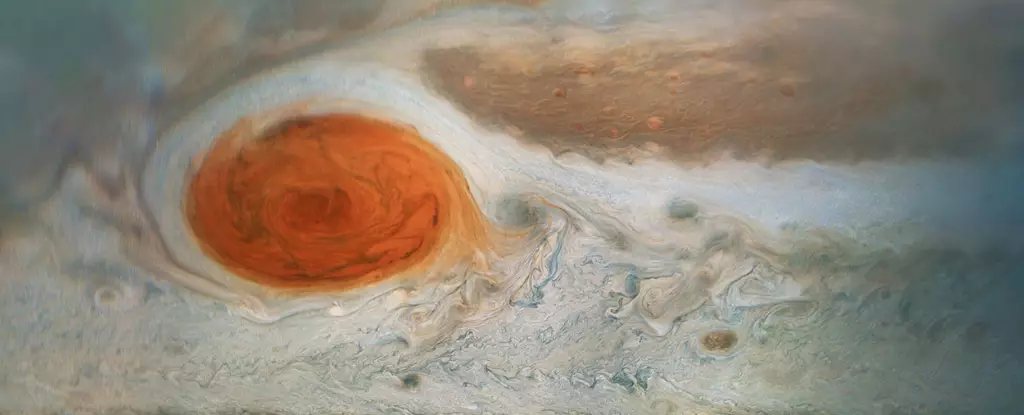Jupiter’s Great Red Spot (GRS) is a fascinating and enigmatic feature that has captivated astronomers for centuries. This massive anti-cyclonic storm, larger than Earth itself, has been a subject of study since the 1600s. However, its exact date of formation and longevity remain shrouded in mystery. Have we truly been witnessing the same phenomenon all these years, or is there more to the story than meets the eye?
The history of the Great Red Spot dates back to at least the 1600s when early observers first caught sight of this enigmatic storm on Jupiter. From Giovanni Cassini’s observations in 1665 to its disappearance in the 18th century, the Great Red Spot has played a significant role in our understanding of planetary dynamics. The re-emergence of a similar storm in the 19th century sparked debates about the continuity of the Great Red Spot throughout history.
Recent advancements in technology, including space telescopes and spacecraft, have allowed us to delve deeper into the mysteries of the Great Red Spot. NASA’s Voyager, Galileo, and Juno missions have provided unprecedented views and data on Jupiter’s iconic storm. Juno, in particular, has captured detailed images of the Great Red Spot, shedding light on its structure and behavior.
In a groundbreaking study published in Geophysical Research Letters, researchers combined historical records with computer simulations to unravel the origins of the Great Red Spot. Lead author Agustín Sánchez-Lavega proposed that the current Great Red Spot is likely not the same storm observed by Cassini in the 17th century. Through supercomputer simulations, the researchers uncovered the role of Jupiter’s complex atmospheric dynamics in shaping the evolution of the Great Red Spot.
One of the key findings of the study is the link between the South Tropical Disturbance (STrD) and the formation of the Great Red Spot. The researchers’ simulations revealed that the STrD could give rise to an anti-cyclonic storm similar to the Great Red Spot. As the storm shrank and became more coherent, it gradually transformed into the iconic feature we see today. This new theory challenges previous notions about the origins of the Great Red Spot.
The Great Red Spot continues to intrigue and perplex scientists as they strive to uncover its elusive origins and evolution. By combining historical observations with cutting-edge technology and computer simulations, researchers are gradually unraveling the secrets of Jupiter’s most iconic storm. As we delve deeper into the mysteries of the Great Red Spot, we come one step closer to understanding the complex dynamics of our solar system’s largest planet.


Leave a Reply